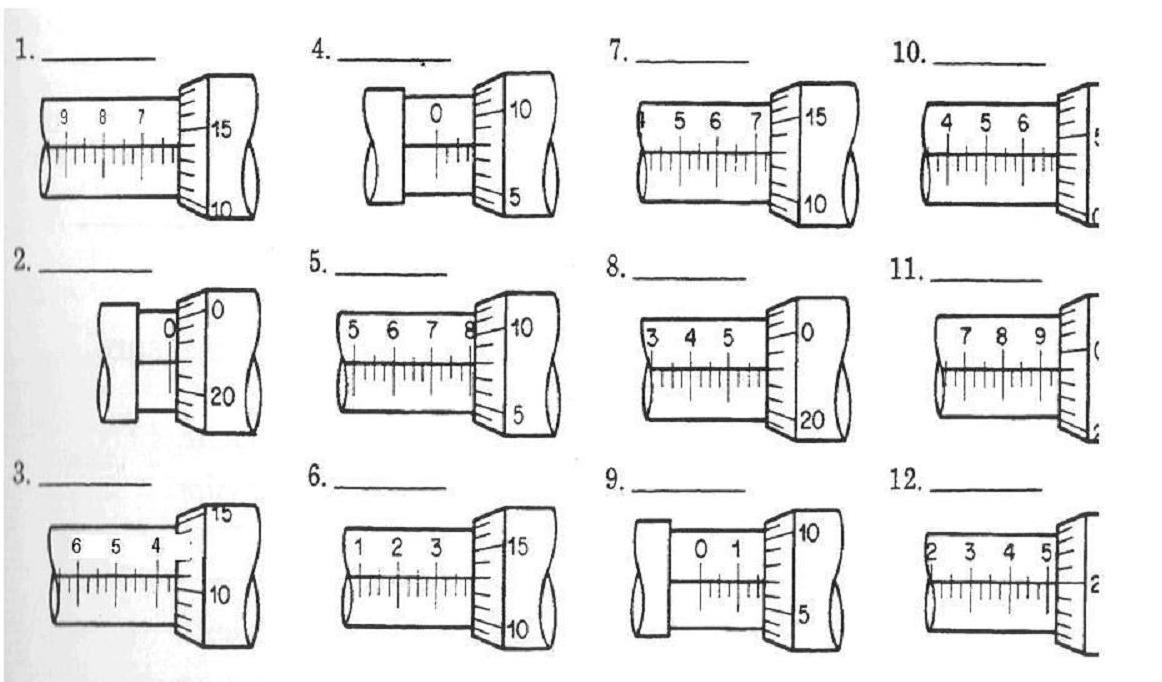Have you ever been tasked with measuring a tiny object, so small that even a ruler seemed like a blunt instrument? Imagine trying to measure the thickness of a hair, the diameter of a wire, or the depth of a groove. For such intricate tasks, we turn to the micrometer, a marvel of precision engineering that allows us to delve into the world of micrometers, a world where accuracy is paramount.

Image: www.youtube.com
But mastering the micrometer isn’t just about understanding its mechanics—it requires practice, like any other skill. This is where micrometer reading exercises come in. These exercises, often found in PDF format, provide a structured way to sharpen your skills and build confidence. They challenge you to interpret readings, tackle different scenarios, and ensure you can accurately measure even the most minuscule details.
Understanding the Micrometer: A Gateway to Precision
The micrometer, an indispensable tool in engineering, manufacturing, and even scientific research, offers an astounding level of precision. It’s capable of measuring dimensions in thousandths of an inch or millimeters, surpassing the limitations of conventional rulers.
Its brilliance lies in its design. A micrometer comprises a fixed anvil and a movable spindle, creating a gap that gets smaller as the spindle is moved in. The key to accurate measurements lies in understanding the markings on the micrometer’s scale. The main scale, usually in inches or millimeters, provides the primary measurement, while the thimble, a rotating sleeve with finer markings, helps determine the fractional part.
Micrometer Reading Exercises: The Path to Mastery
Micrometer reading exercises act as stepping stones on your journey to becoming a micrometer expert. These exercises typically present you with images of micrometer scales, each revealing a unique measurement. Your task is to decipher the readings, applying the principles you’ve learned.
The beauty of these exercises lies in their versatility:
- Variety: They present you with different micrometer scales, testing your understanding of both inch and metric versions.
- Real-World Scenarios: Some exercises simulate various measurement tasks encountered in practical settings.
- Gradual Difficulty: Exercises often progress from simple to complex, gradually challenging you with more intricate measurements and scenarios.
- Immediate Feedback: The exercises typically provide answers, allowing you to check your progress and identify any areas that need further practice.
Demystifying the Micrometer Reading Exercises
Let’s delve into the common types of micrometer reading exercises to get a better grasp of the process:
- Basic Readings: These exercises focus on interpreting the main scale and thimble markings. You will be presented with images of micrometer scales and asked to determine the measurement, honing your skill in reading the main scale, identifying the line on the thimble and calculating the overall reading.
- Zero Setting: Before making any measurement, it’s crucial to ensure the micrometer is zeroed. Exercises involving zero setting might involve adjusting the thimble to align the zero lines on the main scale and thimble, familiarizing you with zero calibration.
- Converting Units: Some exercises involve converting measurements between inches and millimeters, a skill essential for working in diverse environments.

Image: gantt-chart-excel.com
Essential Tips for Conquering Micrometer Exercises
- Practice, Practice, Practice: Like any skill, mastery of micrometer reading comes through consistent practice. The more exercises you tackle, the more comfortable you’ll become with interpreting different scales and scenarios.
- Visualize and Understand: Instead of just memorizing steps, strive to visualize the mechanics of the micrometer. This will help you understand the relationship between the spindle movement, the scale markings, and the final measurement.
- Reference Material: Use online resources, textbooks, or videos to reinforce your understanding. Many websites offer explanations of micrometer operation, detailed scale diagrams, and practice exercises along with answers.
- Seek Guidance: Don’t hesitate to seek help from instructors, experienced colleagues, or online communities if you encounter difficulties. Sharing knowledge and seeking support from others can accelerate your learning process.
Unlocking a World of Precision: Beyond the Exercises
While micrometer reading exercises provide a solid foundation, practical experience is key. Once you’ve gained confidence through exercises, try applying your knowledge to real-world scenarios. Measure small objects around your workplace or home, like the width of a penny, the diameter of a screw, or the thickness of a sheet of paper. These real-life practices further solidify your understanding and empower you to measure with confidence.
Micrometer Reading Exercises With Answers Pdf
Conclusion: Embracing the Precision Mindset
Micrometer reading exercises are not just about achieving a perfect score. They cultivate a precision mindset, essential in various fields. These exercises push you to be meticulous, detail-oriented, and observant, valuable qualities that extend beyond the realm of measurements. So, grab those exercises, hone your skills, and embrace the world of precision with newfound confidence.
Remember, the path to mastery is paved with practice, perseverance, and a willingness to learn; the rewards are plentiful, opening doors to a world where accuracy reigns supreme.





